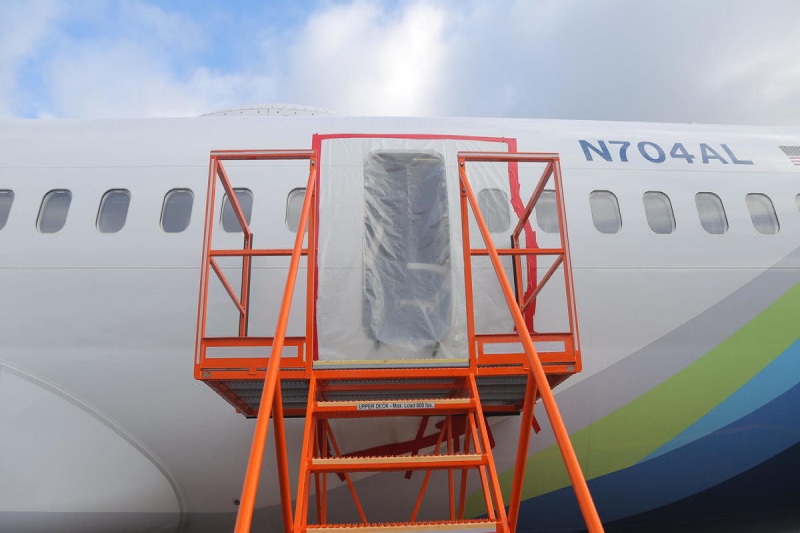A former member of the National Transportation Safety Board tells CBS News that he is worried that last Friday’s near-disaster over Oregon was caused by a manufacturing and inspection process error involving Boeing’s 737 Max 9.
At that point, an aircraft panel generally known as a “door plug” blew out of the Alaska Airlines plane as it was climbing through 16,000 feet to Ontario, California. The flight was departing Portland.
“At the very least, installers missed something,” said former NTSB member John Goglia, who is also an FAA certified mechanic. “It calls into question the process. Was it the process itself? Or was it just a (single) mistake or complacency on the part of the people working on the installation?”
Goglia questioned whether there is currently enough oversight or inspections in place during the manufacturing and installation process of the 737 Max 9, both at the Boeing plant and at the subcontractor in Wichita, Kansas, where the aircraft fuselages are made, given that the aircraft was still relatively new, having just come off the assembly line in October.
“I have not seen nor heard of anybody say that there was an inspection requirement on this (door plug installation). There should be,” said Goglia. “Anything that’s a single point of failure that’s going to cause you a potential crash needs to be checked both by the people doing the work and by a set of eyes that didn’t do the work to make sure that it was accomplished. That is concerning to me.”
Boeing’s 737 Max 9 aircraft is the subject of an investigation by the Federal Aviation Administration, which says it is looking into whether the company “failed to ensure” that the plane adhered to its design and whether it “were in a condition for safe operation in compliance with FAA regulations.”
The FAA released a statement saying, “This incident should have never happened and it cannot happen again.”
Boeing stated that it “will cooperate fully and transparently with the FAA and the NTSB on their investigations.”
On commercial U.S. carriers, door plugs are frequently used to close optional extra doors when carriers decide to carry fewer passengers than the aircraft can accommodate. Tight bolts and stop fittings are meant to keep the plugs in place. Compared to emergency doors, the plugs require less maintenance and don’t require an escape slide to be attached. They are also lighter.
Before retiring, Doug Rice flew commercial aircraft for more than 40 years. “For domestic purposes, they put interior panels across that door such that the passengers would normally never see it,” Rice said. Rice was regularly used as a captain, traveling across the country in older 737 versions that had door plugs installed.
“There are attach points all the way around that door that keep it attached to the airframe,” Rice stated. “Did one of those or more of those fail, or was it not installed properly with those?”
The NTSB’s investigation into what transpired in the skies over Oregon has come to primarily focus on these questions.
On Alaska Airlines Flight 1282, the door plug burst off at about 16,000 feet. The depressurization force was so great that the shirt of a young passenger was torn off and the flight deck door banged open with great force. Without suffering any significant injuries, the pilots were able to safely land in Portland after declaring an emergency and making a full circle.
The outcome might have been disastrous if the door stopper had blown out at cruise altitude, which is normally between 30,000 and 40,000 feet, according to NTSB Chair Jennifer Homendy.
“We’re very fortunate that the outcome — you know, it’s a big shock, but nobody was seriously hurt,” Goglia said. “It happened in at the right altitude.”
Boeing’s president and CEO, Dave Calhoun, stated the business is “acknowledging our mistake” during a meeting with staff on Tuesday.
“We’re going to work with the NTSB, who is investigating the accident itself to find out what the cause is,” Calhoun said. “We have a long experience with this group. They’re as good as it gets.”
Topics #airline #Boeing's door plug









